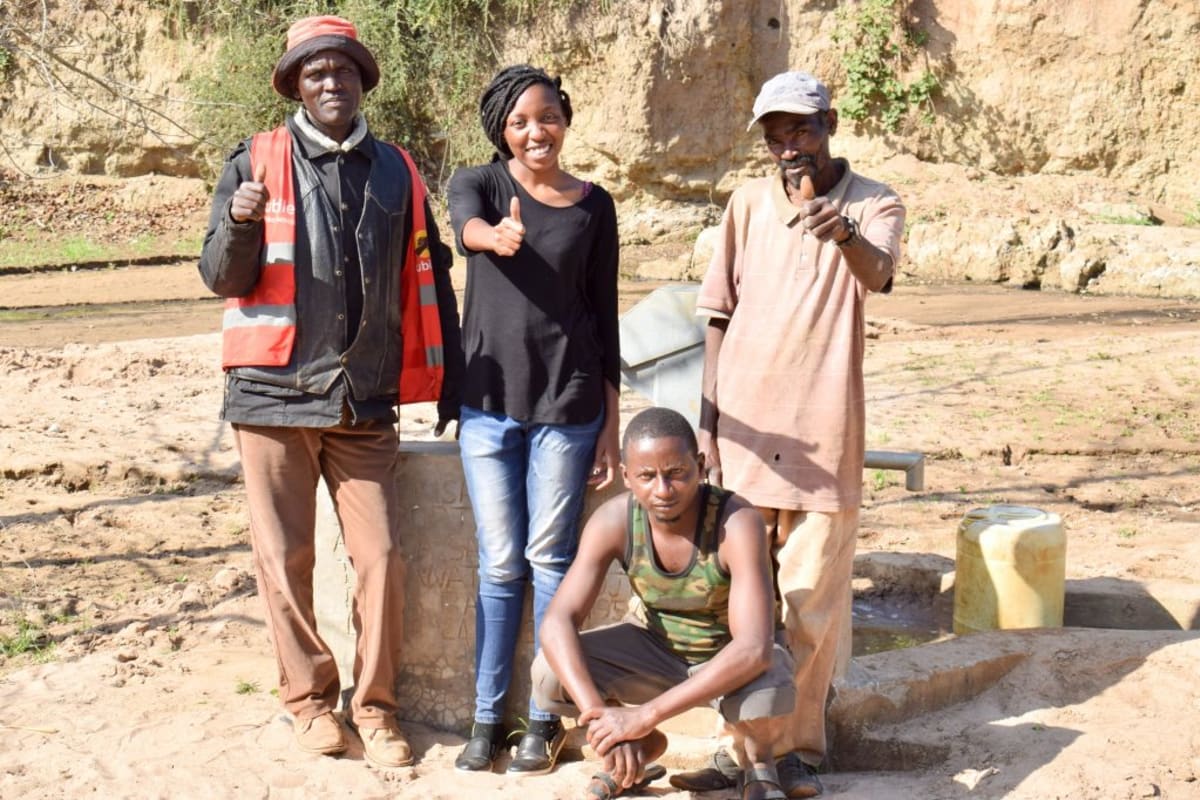This project is a part of our shared program with Africa Sand Dam Foundation. Our team is pleased to directly share the below report (edited for clarity, as needed).
Welcome to the Community
Kisaila Self-Help Group was formed in the year 2011. It now has a membership of 38 members with 24 females and 14 males. Many of the group members are from Kithama Village, where this project's sand dam will be located.
The average size of a member's household is six. A third of members are ages 18-35 years, another third are of the ages 35-60 years. The rest are over 60. This is a very balanced group in terms of youthfulness and the elderly; a perfect blend for executing heavy work such as building a sand dam!
Water Situation
The group built their first sand dam and hand-dug well system last year. Whether living near or far, all group members are walking to the oasis their first system has created. Some of these sand dams are truly the only water available for miles.
Drinking water is collected from a protected hand-dug well adjacent to the sand dam.
Water used for cleaning and watering animals is still drawn from holes dug in the riverbed, to avoid overcrowding at the well.
Most adults use 20-liter plastic jerrycans, which are then loaded onto donkeys or ox-drawn carts. If a household is too poor to afford either of those, then the last resort is to carry the water on their backs. However, most households will have at least one donkey. Of late, households that can afford it use motorbikes to carry their water home.
Once delivered home, water is poured in different storage containers depending on intended use. Some water is poured in barrels near the latrine, and a lot is sent to the kitchen. Some families have been able to afford small rainwater catchment tanks, and water can also be poured in there for storage. It's also common to keep a covered clay pot in the living area so that guests have cool water to drink.
Sanitation Situation
This is our second year of community engagement, with most members of the self-help group having attended training on hygiene and sanitation last year.
100% of group members have a latrine and a bathing shelter in their homes. Compared to other groups, Kisaila group members seem to have fairly good sanitation structures in their homes. And even though they are still a mixture of both permanent and semi-permanent structures, they are clean, neat and generally well kept. This is an indicator of a very positive attitude towards hygiene and sanitation.
Every single group member has a tippy tap (hand-washing station) outside of their latrine, and we verified that each one had soap or ash as a cleaning agent. Dish racks and clotheslines are also being used appropriately.
Plans: Hygiene and Sanitation Review
We will still hold a day of review for Kisaila. We will applaud their great work on sanitation facilities, and encourage them to maintain them. We will continue to teach about household hygiene and water hygiene, teaching how to fetch, transport, and store water to keep it clean until consumption.
It is likely that due to recent cholera outbreaks in Kenya, we will hold a session on how to prevent cholera and recognize its symptoms.
Since this group has been so successful with hygiene and sanitation implementation, we can move on to covering income-generating activities like making and selling soap.
Plans: Sand Dam
The group has selected a spot down the river from their first sand dam, and our technical team has already verified the technical viability of this location. This sand dam will be located in Kathama Village, which has a population of 790.
This second dam is projected to be 62 meters long and 4.5 meters high.
This new dam will bring more water to families living far away from the first sand dam. It will raise the water table and transform the land, making it fertile for farming. With the ongoing installation of a hand-dug well (click here to view that project), water from this sand dam will be safely used for drinking.



 Rehabilitation Project
Rehabilitation Project































